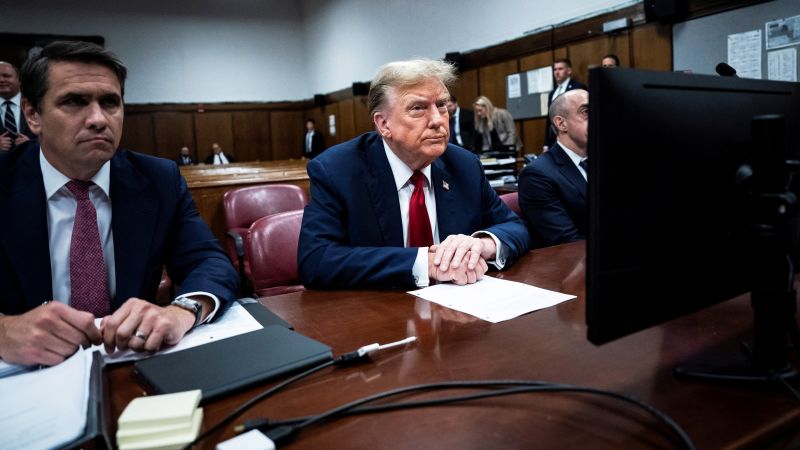The first ever criminal trial of a former US president began in state court in Manhattan, with the challenge of finding an impartial jury for a trial that could last months. Despite the high stakes and salacious subject matter involving a hush money payment to a former adult film star in 2016, the trial kickoff consisted of procedural back-and-forth and a request for former President Donald Trump to have sidebar conversations. Trump displayed his disdain for the proceedings, calling it an “assault on America” and using social media posts to criticize potential witnesses, leading to a separate hearing to determine if he violated a gag order.
The trial was described by reporters in the courtroom, as there was no live or taped audio or video of the proceedings. Information from the court was relayed to the public by reporters like Kara Scannell and Jeremy Herb from CNN. Jury selection is the first priority in the state court in Manhattan, a process that is estimated to take up to two weeks. The trial itself, scheduled for weekdays excluding Wednesdays, could last up to two months.
The first group of 96 potential jurors in the courtroom had over half immediately excused for saying they could not be impartial. This highlights the challenges in finding an unbiased jury for such a high-profile trial involving a former president. With the trial expected to last weeks, if not months, the court must ensure that the jurors selected can remain fair and help determine the outcome. The trial is expected to involve lengthy and detailed legal proceedings, which will test the patience and attention span of both the jurors and the public following the case.
Former President Trump’s involvement and attitude towards the trial are a significant factor in the proceedings. His public statements and social media posts disparaging the trial and potential witnesses have raised concerns about his conduct and adherence to the legal process. The request for Trump to partake in sidebar conversations indicates a unique aspect of this trial, as a former president is directly involved in the legal proceedings and interactions with the court.
The media plays a crucial role in relaying information about the trial to the public, as there are no live feeds or recordings available. Reporters inside the courtroom provide updates and details about the proceedings, offering a glimpse into the trial for those not present. The lack of live coverage also adds to the mystique and intrigue surrounding the trial, drawing attention and interest from the public as they await updates and developments in the case.
Overall, the first criminal trial of a former US president in state court in Manhattan sets a precedent for future legal proceedings involving high-profile figures. The challenges of finding an impartial jury, the unique aspects of having a former president as the defendant, and the media’s role in reporting on the trial all contribute to the significance and impact of this case. As the trial progresses, it will be closely watched and analyzed by the public, legal experts, and politicians alike, shaping the narrative and outcome of this historic event.


